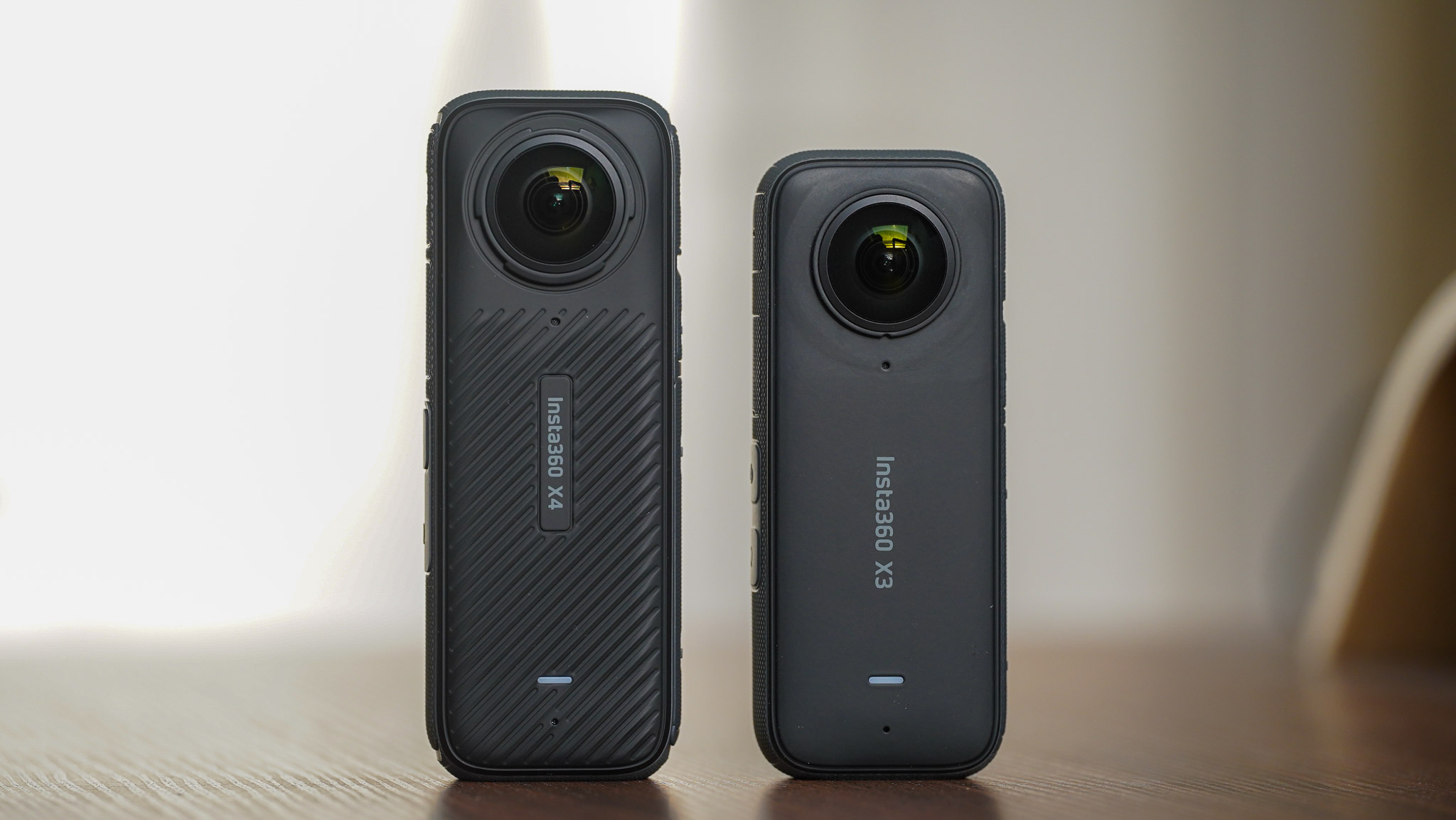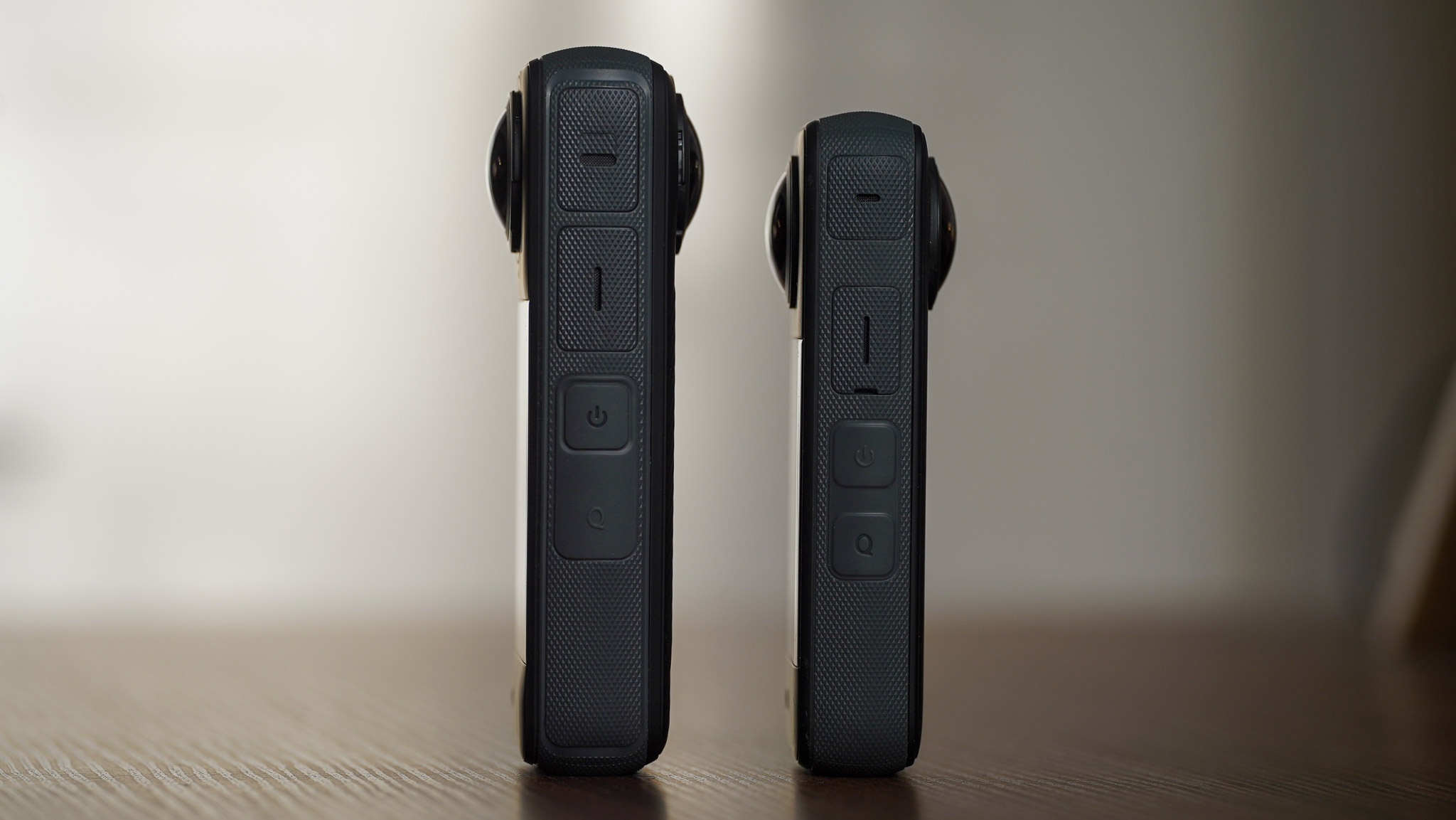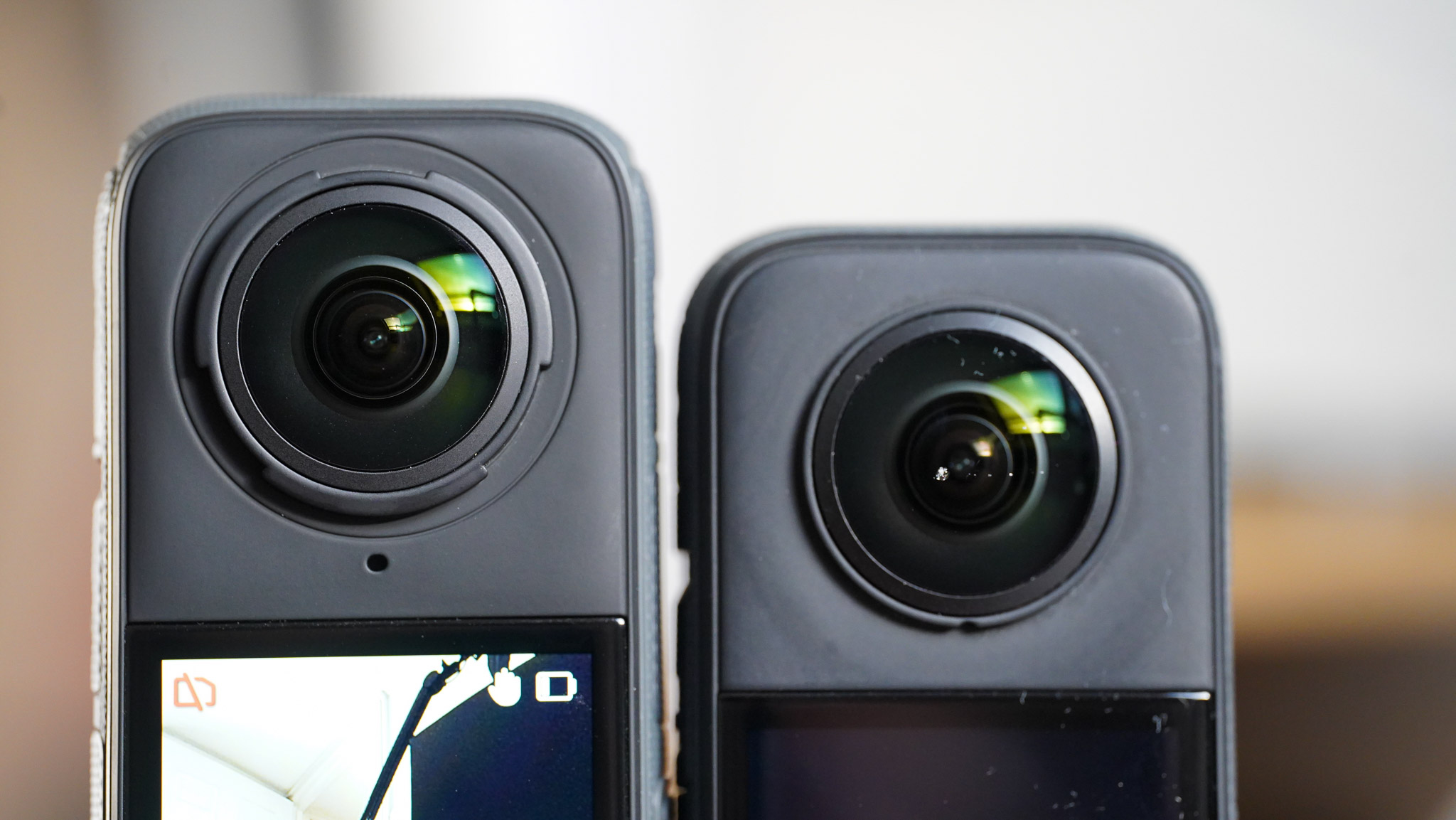
With the launch of the Insta360 X4, the brand further solidified its dominance in the 360° action camera market. But is the new action camera good enough to warrant an upgrade? We compared the Insta360 X4 to the Insta360 X3 to find out.
Launched in September 2022, the Insta360 X3 became the company's best-selling action camera, with over one million units sold since its release. It's still one of the best action cameras on the market today, which is a testament to the device's design and build quality.
That said, 18 months is a long time in action camera circles. Insta360 knows this, which is why it released the successor to the X3, the Insta360 X4. The new model retains some of the key features and characteristics of the predecessor but offers higher resolution and better frame rates in most shooting modes.
Are the updates enough, though, to entice people to upgrade? Which model should people who have never tried 360-degree action cameras choose? It's time to put the two cameras to the test to determine who wins the battle of the best 360° action cameras.
Price and availability
The Insta360 X3 was launched in September 2022 for a recommended retail price of $449/ £459 / AU$799. Just recently, the brand permanently dropped the price of the camera to $399.99/ £408.99/ AU$711.99, probably in anticipation of the launch of the successor.
The Insta360 X4 was launched in April 2024 and is available for $499.99. As expected, the price has increased, although it's only around 10% compared to the original retail price of the X3. Currently, though, you'd have to pay a lot more for the new model.
Both are available via the Insta360 website and third-party retailers.
Winner: With the recent price drop, the Insta360 X3 is definitely more affordable than the X4 and offers a ton of useful features for content creators.
Specifications
Design and build quality

Put them side by side, and you'll instantly notice the difference between the Insta360 X4 and the X3: the former is thicker, longer, and heavier than the latter. You might have noticed this when the Insta360 GO 3 was launched; the housing of the GO 3 is much bigger than that of the Insta360 GO 2.
The maximum aperture and the 35mm equivalent focal length stayed the same (f1.9 and 6.7mm, respectively), so we can only assume the extra weight and volume is to house the larger battery and the (supposedly) more sophisticated electronic layout inside.
The battery upgrade is certainly noticeable. The capacity went from 1,800 mAh to a whopping 2,290 mAh, enabling the Insta360 X4 to have a 67% longer runtime than its predecessor. To put a label on it, that gets you 135 minutes of recording time (vs. 81 minutes on the X3).
One benefit of the larger body is that it can house a larger touchscreen. The Insta360 X4 has a 2.5" Corning Gorilla Glass panel, while the X3 only sported a tempered glass lens on the front.
The button layout is similar but not identical – the quick action button is now not raised that much. One noticeable difference is the patterned back panel on the Insta360 X4. The X3 had a smooth plastic cover, while the X4 has grooves, probably to help keep the camera cooler during longer shots (groovy texture = more surface area to cool).
Both cameras are waterproof to 33ft (approx. 10 metres) and capable of shooting underwater.
Finally, an accessory upgrade: the Insta360 now comes with lens guards included in the box. You can also purchase a premium lens guard for a little extra, but it's nice that you get a pair for 'free' with the new camera.
Winner: tie. The Insta360 X3 is smaller and lighter, but the X4 has a longer battery life, larger and more resilient touchscreen and comes with extras included in the price.
Features

The Insta360 X4 might be bulkier, but it improved all the features of the X3. Well, the software feature set is similar to the predecessor's, but the maximum resolution and frame rates have all been upped in the new iteration.
The maximum 360° video resolution on the X4 went up to 8k @ 30fps, and you can also shoot 5.7k @ 60fps and 4k videos at a ridiculous 100fps. The X3 could 'only' do 5.7k @ 30fps and 3k @ 100fps, which are nothing to frown upon, but not quite the same level as the X4.
Max photo resolution stayed the same, but the X4 can now process PureShot photos on the camera without the Insta360 app.
Me Mode, where the camera tracks you automatically, has been upgraded slightly. Settings in the maximum resolution stayed the same (4k @ 30fps), but on the X4, you can now shoot in 1080p @ 120fps (X3 could only do 60fps).
The maximum resolution in Timelapse mode went from 8k to 11k. Timeshift mode now has a maximum of 8k resolution, too.

Single lens mode, which turns the Insta360 X3 into a mode traditional action camera, can now shoot in 4k @ 60fps with a 170-degree field of view. The X3 could only go up to 4k @ 30fps, so with the new camera, you get smoother motion and the ability to slow down footage without compromising frame rate.
The X4 inherited the Gesture Control from the brilliant Insta360 Ace Pro, which isn't available on the X3. This feature lets you start and stop video recordings by holding up your hand (✋). You can also take photos by showing the piece sign (✌️).
And since the X4 has a 360° field of view, you can signal either hand sign from any angle, and the camera will recognise it. This opens up a whole host of creative opportunities for taking photos.
Winner: there might not be a ton of new shooting modes (do we need any more?), but there is no denying that the Insta360 X4 is a superior camera to the X3 when it comes to features.
Verdict

Insta360 X4 vs Insta360 X3: is it worth the upgrade?
The new camera has definitely upped the game and offers higher resolutions and framerates in most shooting modes. Battery life has also been extended, and the gesture control feature is an exciting new addition to the X line.
That said, the resolution and the framerate of the X3 are more than enough for most content creators working on platforms such as YouTube and Instagram/TikTok. Although shooting in 8k and slo-mo in 5.7k is a fantastic proposition, most streaming platforms will only be able to handle 4k @ 60fps, making the improved specs of the X4 almost redundant.
For now, anyway! Getting the Insta360 X4 means you can future-proof your content creation process. Thanks to a faster internet connection, a time will come (very soon) when people will stream higher-resolution content. When that happens, 8k will quickly become the norm, with 4k footage looking pretty poor in comparison.
We can certainly envision a future where the Insta360 X4 is just as popular as its predecessor. It's a very competent action camera, albeit a bit overpowered at the moment.







